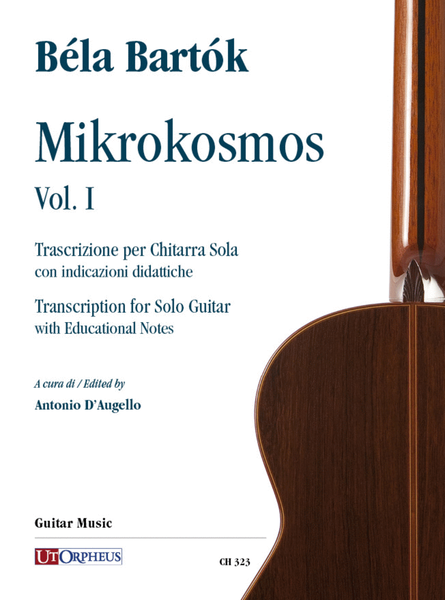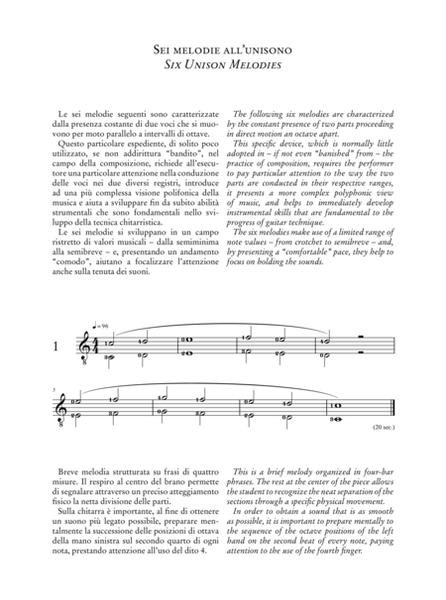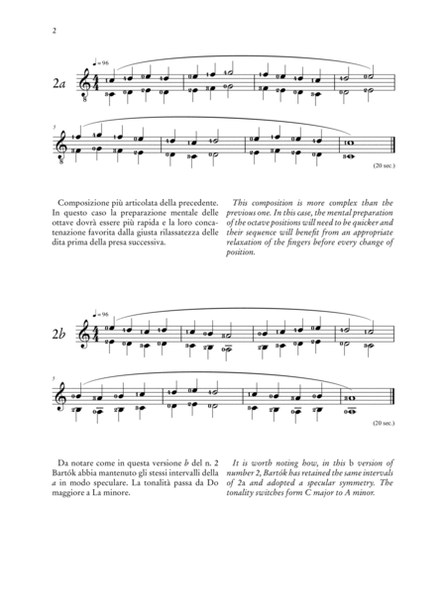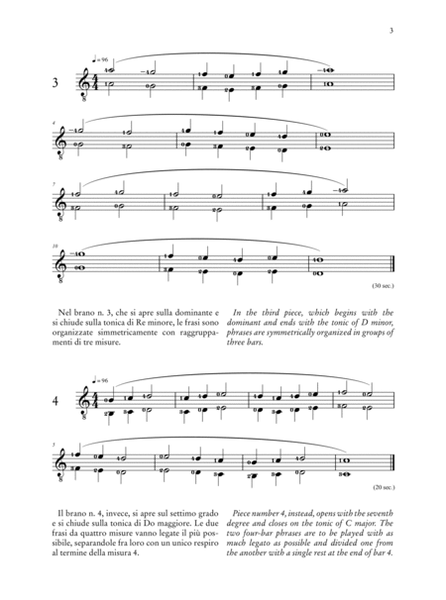Mikrokosmos Vol. I. Transcription for Solo Guitar with Educational Notes
-
Ships in 3 to 4 weeks
Details
Description
SKU: UT.CH-323
Composed by Bela Bartok. Arranged by Antonio D’Augello. Saddle stitching. Classical. Score. Ut Orpheus #CH 323. Published by Ut Orpheus (UT.CH-323).ISBN 9790215326316. 9 x 12 inches.
Antonio D’Augello’s work unexpectedly interrupts a teaching tradition for the guitar by ignoring everything that defines the sense of phrasing, the idea of explanatory logic, the value of the intelligibility of the text, posponing the matter until an undefined later date in musical education.
If we make an exception for Brindle’s Guitarcosmos, we do not have any examples, for the modern guitar, of short compositions that are musically complete and that present increasing difficulty.
The literature regarding guitar didactics of the early 19th century, although undoubtedly important, is nonetheless strongly influenced by a formulary that inexorably respects the stylistic and instrumental functions connected to the physiology of the instrument.
Moreover, in the same literature, the total absence (which is unexplainable) of indications regarding articulation, leads the guitarist towards an often unconscious discretion that is a result of the limited musical knowledge of the learner student.
In the guitar version of the Mikrokosmos edited by Antonio d’Augello, the clarity of Bartók’s musical idea permeates every step of the learning process and transfers the composition modules, which are apparently elementary, to the creative space of conscious interpretation.
From the very start the sense of music justifies the study dedicated to the instrument.
Contact with fundamental structural elements gratifies the young musician and it leads her/him towards the discovery her/his own personal talent.
Guitar literature welcomes a text which is perhaps theoretically distant since it was originally conceived for the piano, and with its intrinsic art the guitar offers its colours, its vibration and its cantabilità.
The early steps to learning music thus have the reliable guide of a creative text that has developed out of musical grammar and syntax and is permeated by creative vigour and attention to important details that are not to be ignored at the start of studing the guitar.
Antonio D’Augello’s work seems to have been conceived as an introduction to the "vestibule of the temple" and presents concrete and stimulating good omens. (Angelo Ferraro)




 Share
Share